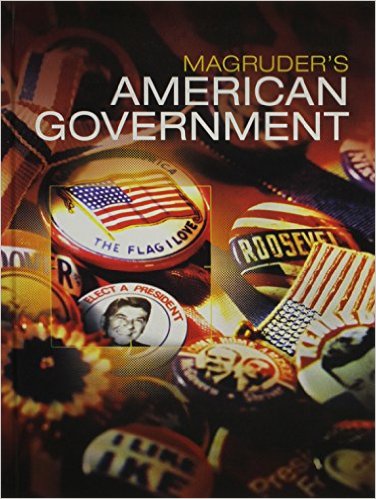
Magruder’s American Government
1st Edition
ISBN: 9780133306996
Textbook solutions
All Solutions
Section 11-1: Political Parties and What They Do
Exercise 1
Step 1
1 of 2
American society is pluralistic and consists of many different parts. However, there is a consensus on fundamental issues. These are issues concerning national security and safety, patriotism, democratic order, freedoms and rights, restrictions on the power of the state, etc. There have never been more serious divisions in America regarding these core values and ideals.
Step 2
2 of 2
Since there is practically a two-party system in America, the majority of voters are in favor of one of the two main parties. Independent candidates or third parties have a very small number of supporters. The ideology of the main parties coincides with the ideological consensus of society. The parties are aware that it is necessary to keep a moderate center in their policies. In that way, they correspond to the ideology with the views of the majority of citizens.
Exercise 2
Step 1
1 of 3
Minor parties have very little chance of winning the election. Behind their candidates are no party mechanisms that have two leading parties and that are key to winning the election.
Step 2
2 of 3
If it still happens that some candidates of these parties win the elections, there is a possibility that it would produce negative consequences for the party. Given that the candidates of these parties very rarely had a chance to participate in the government, these parties do not have enough experience in actual participation in government. Rather, their function is to raise awareness of an issue that is not being addressed by the two leading parties and to lobby for that issue to be given importance.
Step 3
3 of 3
Minor parties usually deal with a narrow range of topics, while participation in government requires the formation of a policy on all issues that are important to the public. Minor parties simply do not have the capacity for this comprehensive policy-making that would be expected of elected representatives.
Exercise 3
Step 1
1 of 4
The President of the United States is individually the most powerful political figure in the country. For that reason, by being elected to this position, he becomes the dominant and leading person of his party.
Step 2
2 of 4
The president’s duties include appointing and proposing people for many important positions in the state, and it is to be expected that he will elect these people from among the members of his party. With this, the President increases the party’s influence in society on the one hand and his personal influence in the party on the other.
Step 3
3 of 4
During the term of office of the President, the party he comes from enjoys additional benefits. The President has the opportunity to be widely present in the media, which leads to additional promotion of his party.
Step 4
4 of 4
All these benefits that the party received lead to the fact that it is more united and consolidated in order to support the President. This gives the president the power to influence the development and decisions of the party.
Exercise 4
Step 1
1 of 3
It is easier for the parties in power to achieve party unity than those in opposition.
Step 2
2 of 3
The euphoria created by winning the elections has an integrative effect on membership. Also, when a party is in power, it has access to various resources. The party appoints and appoints its members to many important positions in the administration. In this way, satisfaction is achieved with its members, which leads to a greater degree of unity. In order for party members to remain in power and thus retain the benefits it provides, they must strive to maintain unity.
Step 3
3 of 3
In the opposite case, when the party is not in power, a feeling of dissatisfaction and pessimism can develop in the membership. Members may blame each other for election failure and may lack motivation to engage in party life until the next election.
Exercise 5
Step 1
1 of 4
During the creation of the United States Constitution, there was a conflict of opinion between the two opposing sides.
Step 2
2 of 4
One side was **the Federalists** led by Alexander Hamilton, while they were opposed by the **Anti-Federalists** led by Thomas Jefferson.
Step 3
3 of 4
The Federalists were in favor of greater powers for the federal government, while the Anti-Federalists believed that the States should have more significant powers.
Step 4
4 of 4
Although the Constitution itself did not contain provisions on parties, the Federalists and the Anti-Federalists became two opposing political parties in the country immediately after its adoption. So, we can conclude that the American system had a **bipartisan** form from the very beginning.
unlock

